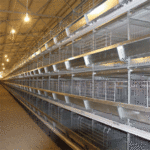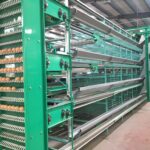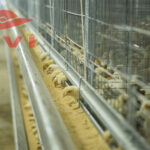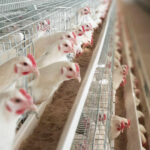Methods to improve the production level of broilers
The level of broiler production depends critically on the genetic potential of the chicken, and the degree of intrinsic potential performance is not only closely related to the suitability of the living environment in which it is located, but also has a lot to do with the proper feeding management. At present, many breeders do not pay much attention to feeding management, which affects the growth and development of broiler chicken battery cages, causes feed waste and reduces the feeding effect. Farmers should do a good job of feeding management from the following aspects to improve broiler feeding effects.
- Seize the opportunity to start a meal
After the chicks arrive in the chicken coop, they are placed in modern chicken cages to familiarize themselves with the environment, and then drink water for 2-3 hours. When 1/3 of the chicks show signs of pecking, or 24-36 hours after they emerge, it is too early. Late is bad for the chicks Too early or late will be detrimental to the chicks. Pre-feeding will affect the absorption and utilization of egg yolk in the chicks, causing indigestion, which will affect the growth and development of the chicks and the utilization of feed. In addition, premature feeding, chick activity and chicken manure will contaminate the feed and affect the health of the flock. Feeding too late will cause excessive consumption of the yolk in the chicks and weak physique, which will also affect the growth and survival rate of the chicks.
- Provide adequate feeding positions
After 7 days of age, each chicken should have a feeding position of at least 5 cm wide. As the age increases, the feeding position should be gradually increased, reaching about 10 cm at 49 days of age. If the feeding position is not sufficient, it will affect some parts. The feed intake of chickens is likely to cause uneven size of the flock.

- Regularly adjust the height of the trough
As the age of broilers increases, the height of the trough should be adjusted regularly. The upper edge of the trough should be flush with the back of the chicken or 2 cm higher. Chickens do not have teeth or soft palate. When pecking and drinking, they must raise their heads to enter. The feed trough is set up properly to reduce feed overflow from the mouth and reduce feed waste.
- Control the amount of each feeding
It is not advisable to add too much each time, because chickens have poor digestibility and overeating can easily cause indigestion and affect the utilization rate of feed. The amount of feed used per day should be calculated reasonably and divided equally according to the number of feedings. Add the ingredients you added last time, or add them after a short period of time. Do not add ingredients, otherwise it will easily cause chicken indigestion and picky eaters, affect the growth and health of the chickens, and cause feed pollution.
- Supply of high-quality feed
Because broilers grow fast and their digestive functions are not very complete, it is necessary to supply a full-price compound feed that is easy to digest and has comprehensive nutrition. Broiler feeding is generally divided into three stages: 0-20 days of age is the brooding period, 21-38 days of age is the middle stage, and 39 days of age to slaughter is the late stage. Different feeds must be supplied according to the stage.
Through the above methods, chicken are lived in poultry broiler chicken cages. Cages can grow healthily and efficiently, and provide chickens with a comfortable and good growth environment, high-quality feed, and rich nutrients. I hope it can be of some help to caged chicken farmers.












